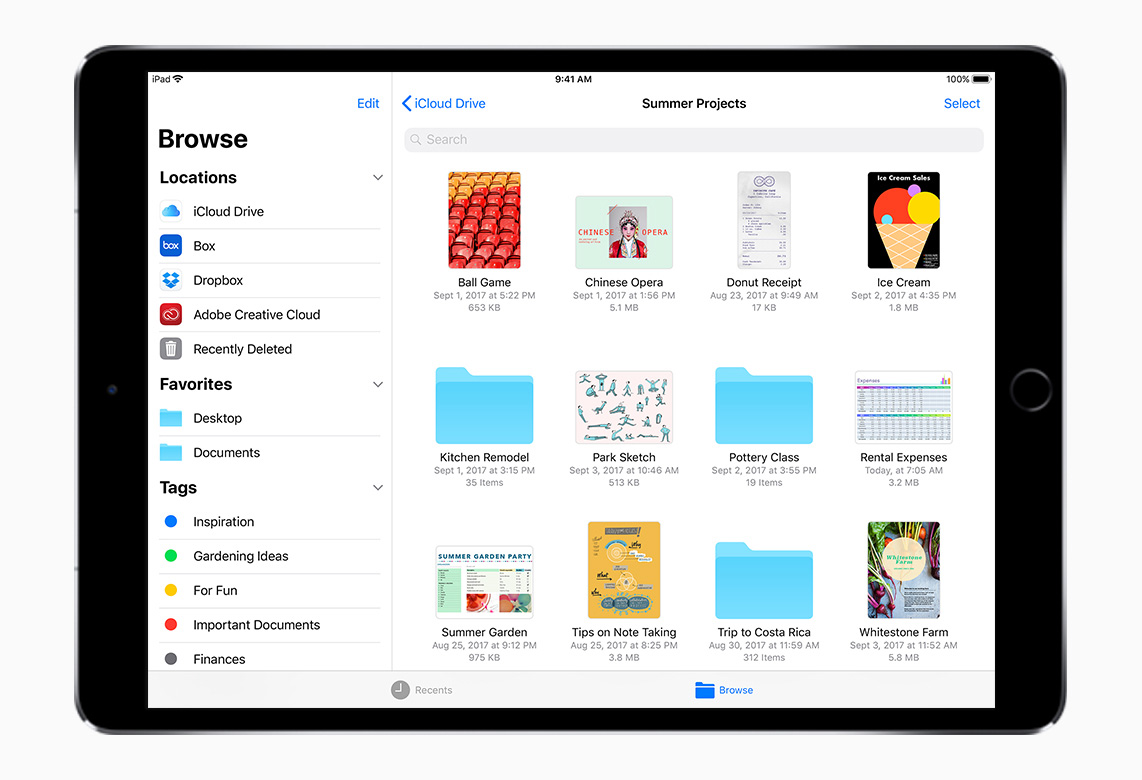

inally, iPad is getting its due. Since Apple introduced its tablet, it’s always been the lesser sibling, sort of like an iPod music player with a big screen.
While Apple finally delivered an enterprise class tablet with the iPad Pro, it’s taken until iOS 11 for the iPad to get the software features it needs to stand on its own.
With iOS 11, the iPad gets new features designed specifically for the tablet that serve to make this tablet much more competitive with an ultrabook or with Microsoft’s Surface tablet.
But it’s worth noting that the iPhone also got some nice software upgrades as well, some that are pretty significant on their own.
Apple is saying that iOS 11 is a “Monumental Leap” for the iPad. This is especially true for the iPad Pro because iOS 11 provides new functionality for the Apple Pencil, which it certainly needed. The updated mobile OS also provides new access to files and documents that can help make your workflow faster and easier.
One example of this is the drag and drop feature that works on the tablet as it does with most Apple software and with some third party applications. With Apple software you can essentially drag anything and drop it anywhere on the screen of the iPad. Using this in conjunction with the new Files app, and you can consolidate your file storage, whether the files live on the iPad, on a network server somewhere in the cloud.
You can drop those files into the Files app or drag them to other iOS apps, such as your email or into a document. This is made easier by the new multitasking capability that’s available with iOS 11.
You can open two apps on the screen much more easily, and switching between apps is now more seamless with the addition of a dock at the bottom of the screen and by a new app switcher that appears when you click the Home button twice quickly.
The dock normally shows your most recently used apps, but you can customize it so that certain apps will always be there. The dock also shows currently open apps on the right side. You can open apps so that they’re running side by side using the dock, and you can use them in split screen.
The multi-tasking ability adds significant flexibility to activities such as content creation where you need access to text and photos at the same time, for example.
The iPhone gets most of the features that the iPad gets, including drag and drop. However you won’t see the multitasking that the iPad has and of course the Apple Pencil won’t work with the iPhone.
Originally published on eWeek
Page: 1 2
OpenAI chief operating officer Brad Lightcap to oversee international expansion as company consolidates lead in…
Chinese researchers publish details on device that could wreak havoc on undersea communications cables in…
Former Intel chief Gelsinger expands role at Gloo, becoming executive chairman and head of technology…
MEPs add to Commission pressure for second EU Chips Act amidst industry calls for renewed…
Smartphone maker Xiaomi reportedly raises about $5.5bn in Hong Kong share sale as it invests…
BYD's Qin L EV sedan starts at about half the price of Tesla's Model 3,…